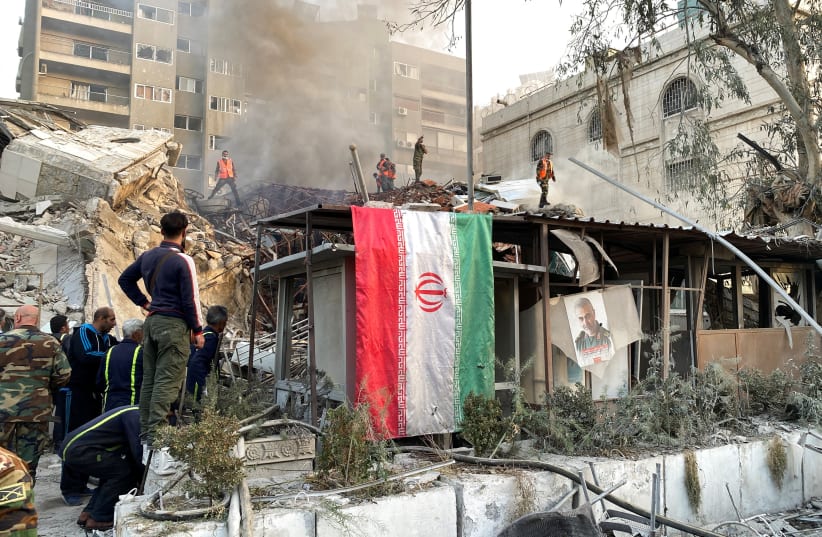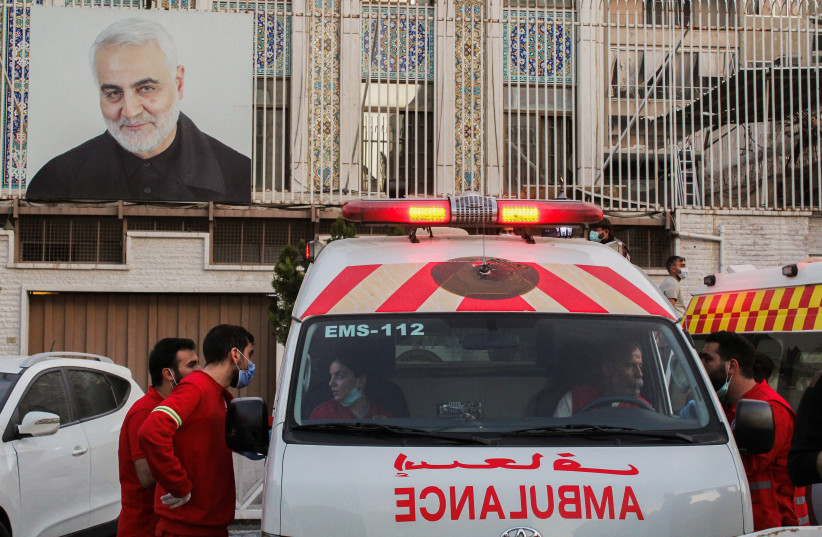SETH J. FRANTZMAN

This is symbolic because it shows how a whole generation of key operatives and allies of Iran have been killed. It is symbolic on a wider level because it shows how Iran may be losing its grip on Syria as its IRGC chain of command there suffers losses. The loss of Zahedi is being watched in the region. For instance, Al-Ain media in the UAE has an article examining the photo and noting that Nasrallah is the “last of them.”
“In the Iranian consulate strike, seven Iranian military advisers and officers were killed, the most prominent of whom was Mohammad Reza Zahedi, who served as Deputy Chief of Operations of the Iranian Revolutionary Guard, in addition to assuming command of its air and ground forces,” the report notes.
It also notes the fate of the others in the photo. For instance, Qasem Soleimani was killed in a US drone strike near Baghdad airport in January 2020. Soleimani had arrived for a meeting with Abu Mahdi al-Muhandis, a leader of the Iranian-backed Kataib Hezbollah. Muhandis and Soleimani were driving in a convoy of vehicles when the drone targeted their vehicle and killed them. Kazemi, who is also in the photo, was killed in a plane crash in 2006. Mughniyeh was assassinated in Damascus in 2008.
Al-Ain says that Zahedi is the “fourth prominent leader of the Revolutionary Guards to be assassinated,” since December. Iran has blamed Israel for the attack. He was killed in an airstrike on a building next to the Iranian consulate. The building served as the “military headquarters of the Revolutionary Guards,” Al-Ain notes.
The death of Zahedi follows a series of losses for Iran and its proxies in the region. For instance back in December 2023 IRGC commander Razi Moussavi, was also killed in Syria. In January 2024 five more IRGC members were killed in Damascus. Iran vowed revenge at the time. These are not the only losses for Iran. Its key friends and allies have also been killed.

Members of Syrian Red Crescent work near the damaged site after what Syrian and Iranian media described as an Israeli air strike on Iran's consulate in the Syrian capital Damascus April 1, 2024.
Zahedi will be hard for Iran to replace
Saleh al-Arouri, a key Hamas commander who was residing in Lebanon, was killed in January. Wissam Tawil, a Hezbollah member was also killed. Ali Abed Akhsan Naim, the deputy commander of Hezbollah’s rocket and missile unit was killed in Lebanon in late March.
Iran and its proxies will have a hard time replacing these men. This is because many of them had decades of experience working in their various capacities. They also were key nodes in Iran’s network that links Iran to militias in Iraq and Syria and then links Iran’s network in Damascus to Hezbollah in Lebanon.
Iran has armed Hezbollah over the years with various types of weapons, from missiles to anti-tank missiles, to drones and precision guided munitions.
Iran relies heavily on its network of senior commanders who know one another. It operates in a sense like a mafia in the region, establishing various miniature versions of the IRGC in several countries and creating proxy networks. These rely on key individuals. Without those individuals some of these networks are thrown into chaos. That doesn’t mean the networks don’t continue to possess weapons and create threats. However, it does change their cohesion.
Iran has been seeking to knit together all these groups in various years. Tehran describes this as uniting various “arenas” or fronts against Israel. In all, there are at least seven fronts that Iran wants to operationalize against Israel. This week the unity was on display as an Iraqi militia launched a drone at Eilat, and also as Hezbollah continued its threats against Israel and as Iran sought to destabilize Jordan with protests and also sought clashes in the West Bank with the Palestinian Security Forces.
Iran has sought to smuggle weapons to the West Bank in the last years. This illustrates that Iran continues to manage various fronts against Israel even as it takes losses in other places. The loss of Zahedi is important for Tehran and its nexus in the region and his missing presence at meetings and in other affairs will be felt for years.
No comments:
Post a Comment